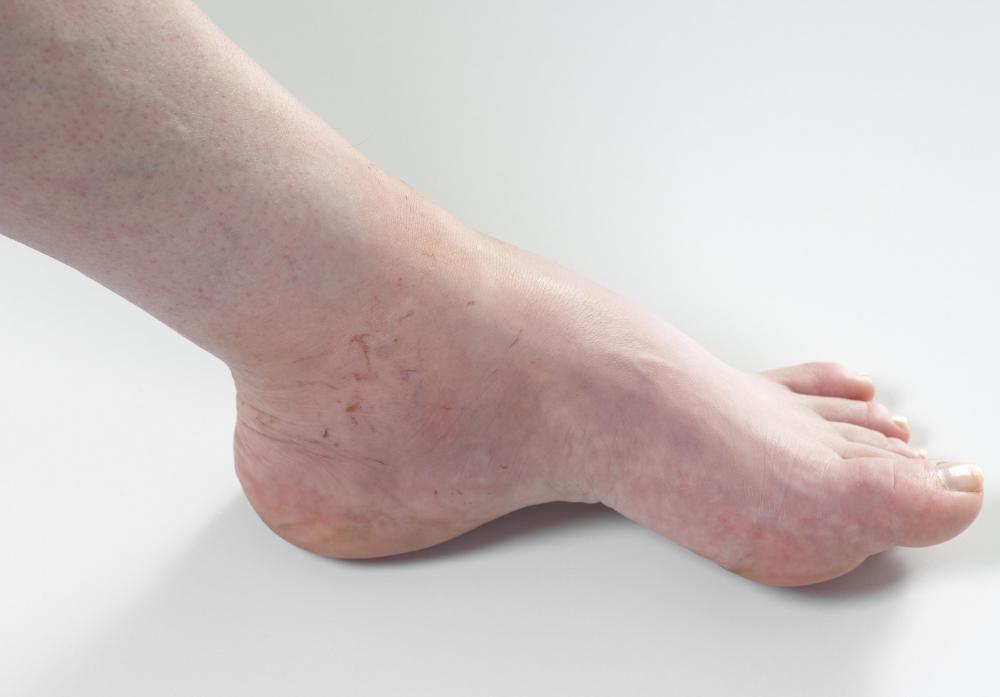At TheHealthBoard, we're committed to delivering accurate, trustworthy information. Our expert-authored content is rigorously fact-checked and sourced from credible authorities. Discover how we uphold the highest standards in providing you with reliable knowledge.
What is the Pathophysiology of Edema?
The pathophysiology of edema varies based on the type of edema the sufferer experiences. The excessive retention of interstitial fluid characteristic of edema may be caused by an overconsumption of salt or failure to properly excrete sodium from the body. Edema may also be caused by poor circulation or other heart and lung conditions. Alternatively, the palpable swelling of body parts may be caused by blockages in the circulatory system or problems with cellular regulation of fluid. Since edema is usually a symptom of other disorders, physicians must determine the pathophysiology of edema on a case-by-case basis to help treat their patients.
Heart problems are commonly associated with the pathophysiology of edema in the lungs. Pulmonary edema occurs when fluid builds up around the lungs. This is a characteristic symptom of coronary artery disease, heart valve problems, cardiomyopathy, and unregulated high blood pressure. This type of edema is dangerous because it can lead to pneumonia as the alveloli in the lungs fill with fluid instead of air. Doctors will often prescribe diuretics to reduce pulmonary edema.

Although pulmonary edema is often related to heart problems, some other, non-cardicac causes are associated with the pathophysiology of edema in the lungs. This condition may indicate that the patient is experiencing a lung infection or a reaction to medication or environmental allergens. Some patients may experience pulmonary edema as a result of exposure to toxins in the environment. Healthy people may experience fluid buildup in the lungs as they travel to or live among high-altitude locations.

Disturbances in the lungs and kidneys are also common agents in the pathophysiology of edema. These organs are usually associated with generalized edema that causes swelling throughout the body. The liver and kidneys are primarily responsible for filtering toxins and salts from body fluids. If either has been damaged or is being inundated with an excessive amount of these harmful chemicals, the result may be visible swelling in the feet, hands, and face. Generalized edema usually involves fluid outside of the cells.

The pathophysiliology of edema that is localized in single extremities or regions of the body is usually obstruction in the veins that would ordinarily carry blood and fluid from that body part. Thus, localized edema can be a tell-tale symptom of blood clots, trauma, or tumors. Edema in the extremities may result in pain and skin sores.
During pregnancy, the chemical balances in the blood often change. Most women experience localized edema in the lower extremities during pregnancy. This can be uncomfortable, but should only be alarming when it has a rapid onset or swelling is also present in the face and hands.
AS FEATURED ON:
AS FEATURED ON:


















Discuss this Article
Post your comments